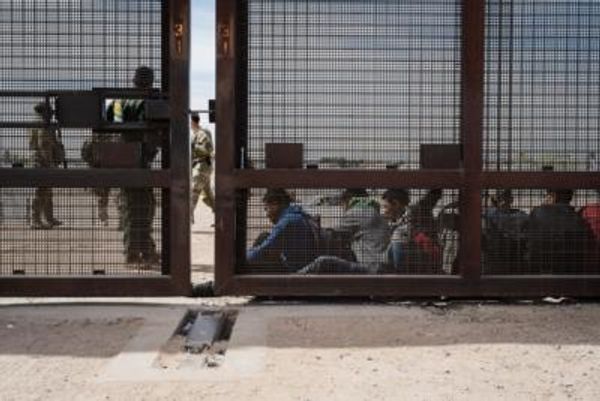
Power bills for households in three states will rise as much as 23.7% from 1 July if the Australian Energy Regulator’s draft determination, announced on Wednesday, is confirmed. Prices in Victoria may rise by almost a third.
The AER chair, Clare Savage, said the increases were “significant” but they could have been as much as 40% to 50% without the federal government’s intervention in December to cap domestic gas and black coal prices.
The electricity price safety net, also known as the default market offer, is intended to set maximum increases for households and small business customers on standard retail plans in South Australia, New South Wales and south-east Queensland. Victoria releases its own default offer.
In NSW, residential customers face price increases of as much as 23.7%, or 16.9 percentage points higher than the inflation rate. Those in south-east Queensland face increases of as much as 19.8% and residents in South Australia as much as 21.8%, the AER said.
For small business customers, prices will increase between 14.7% and 25.4% depending on their region, the regulator said.
Victoria also released its own draft decision for consultation, proposing the average annual bill for domestic customers on the Victorian Default Offer will rise 31.1%, with small business customers facing increases of 33.2%.
“The draft decision proposes an increase of around $426 for residential customers, with typical bills increasing from $1,403 to around $1,829 per year,” the state’s Essential Services Commission said. “For small business customers, typical bills would increase by around $1,738, from $5,620 to around $7,358 per year.”
The AER said customers should shop around to minimise the increases. “Based on offers available in February 2023, residential customers switching from a standing offer to the lowest market offer could save 7% to 17% and small business customers could save 9% to 26%, depending on their region,” the regulator said.
Savage told ABC’s Radio National: “It’s not as bad as it could have been.”
The federal government legislated to cap wholesale gas prices temporarily at $12 a gigajoule and cap coal prices at $125 a tonne, a move Treasury estimated would save the average households $230 on their electricity bills in the next financial year.
The AER said forward contract prices for the 2023-24 financial year had begun to fall in south-east Queensland and NSW “as soon as the intervention was publicly mooted”.
“Contract prices have now fallen by approximately 50% since the end of October,” it said. “However, despite this significant decline, the trade-weighted average prices for 2023-24 contracts are around $40 per megawatt-hour higher than they were at the start of 2022 in all regions.”
On Monday the climate change and energy minister, Chris Bowen, said he expected the default offer to be “significantly lower than the AER’s predictions” before the government’s intervention in December.
In November the AER advised that, without action, the residential default offer would increase by between 35% and 44% in NSW, 51% in South Australia, and 41% in south-east Queensland.
Bowen revealed that the government estimated small business customers were on track to pay 37% more in NSW, 53% more in South Australia and 50% more in south-east Queensland.
“We simply had to act,” he told the Sydney Institute. “But I know that will be cold comfort for people who will still have to deal with the resulting energy bill increases.”
On Wednesday, Bowen said households would avoid increases of $268 – $530 because of the intervention. The savings for small businesses would reach as much as $1,243.
Bowen noted that the government would deliver $1.5bn of energy price relief rebates, expected after the May budget.
The Coalition’s energy spokesman, Ted O’Brien, said the higher prices were evidence of a “broken promise reconfirmed”, with more than 82,000 households now on hardship programs.
“Energy bills have skyrocketed despite Labor’s promise of a $275 reduction and now they are set to soar even higher,” O’Brien said. “It’s further proof that Labor’s energy plan is failing.”
Bruce Mountain, head of the Victoria Energy Policy Centre, called on Victoria’s Essential Services Commission to “think again” about its “problematic” recommended price increase.
“They average contract prices over a 12-month period and so their calculation reflects the surge in contract prices from around June to October last year,” Mountain says.
“But there is little evidence to suggest that these contract prices represent the costs that retailers will incur over the coming 12 month period,” he says.
The result is that the increases - if maintained in the final decision - would “needlessly deliver large windfall profits particularly for Victoria’s large retailers, at customers’ expense”.
“This is contrary to the government’s stated objective in introducing the VDO.”
Data from Energy Action shows Victoria’s wholesale power prices jumped from the middle of last year but not as much as states to the north. The commission said wholesale power costs were up 95% from the 2022-23 year, and made up about 36% of the annual domestic bills.
The Victorian government said households would still continue to pay less on average for their electricity than residents in south-east Queensland, NSW and South Australia.
“We know that Victorian households are facing real pressures because of the increasing cost of energy globally,” said a spokesperson for the energy minister, Lily D’Ambrosio. “That’s why we’ve fast-tracked a new round of the $250 power saving bonus and encourage Victorians to access our rebates for solar PV and hot water systems.
“We’re also reducing our reliance on costly fossil fuels – that’s why we’re bringing back the State Electricity Commission and replacing unreliable, privatised coal with clean, government-owned, renewable energy.”
The Victorian opposition leader, John Pesutto, said the government should explain why the proposed increase was larger for Victorians than elsewhere.
“Four years ago, [premier] Daniel Andrews promised Victorians that he would reduce power prices through a default market offer,” Pesutto said. “Well today, he’s broken his promise and he owes Victorians an explanation for why they are paying more for energy prices than people living in other states around our country. People are doing it hard. They need relief, not energy price increases when they can least afford it.”
Cassandra Goldie, chief executive of the Australian Council of Social Service, said the latest increase would land as a blow for consumers after increases of 20% last year.
“People on the lowest incomes do not have anything left in their budgets to cut back on and are at breaking point,” Goldie said.
ACOSS wants the federal government to adjust the AER’s guidelines for the default offer to lower retail margins as has been done in Victoria.
The chief executive of Energy Consumers Australia, Lynne Gallagher, said as many as half of households could be missing out on assistance that they are eligible for, often because of red tape.
“Retailers know when customers are not on the best deal and we’d like them to be more proactive in reaching out to offer them the best possible option,” she said.
After consultation, the AER will issue its final default offer for the year in May.







